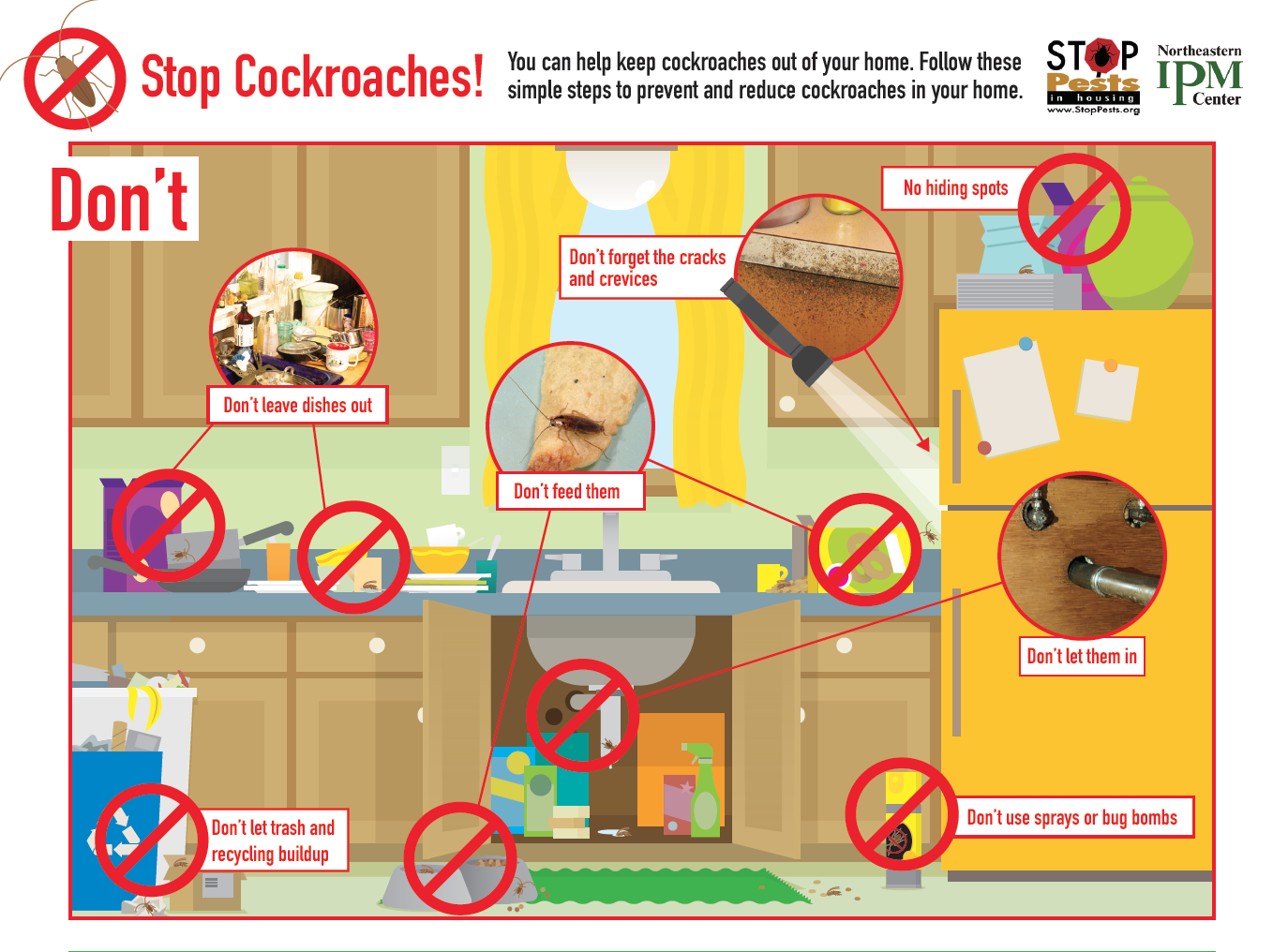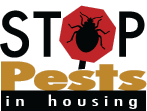Working with Residents
A Resident’s Role
The requirements in your residential lease, if enforced, will result in a home that is good for people and bad for pests. Many residents take steps to prevent bringing pests home, call management when they see a pest, and keep their homes clean and clutter-free. Commend them, these residents are doing their part.
Controlling pests is about
- preventing access;
- detecting pests quickly; and
- making sure food, water, and shelter are not available.
For pest-specific IPM strategies, visit our Pest Solutions page.
Obstacles
Residents can hinder an integrated pest management (IPM) program in many ways. Having a staff member accompany the contracted pest management professional is the best way to keep tabs on the focus units and coordinate your efforts to overcome obstacles.
Impede PMP’s access for inspection or treatment
- Residents verbally refuse to allow the pest management professional (PMP) to enter
- The master key no longer works in the unit door
- An aggressive dog is loose in the apartment or locked in a room the PMP needs to access
Don’t prepare the dwelling unit for inspection or pesticide application
- Items are stored on top of refrigerator (the PMP needs to pull out the refrigerator and look behind it)
- Rooms are too full for the PMP to move objects around for inspection
- Inspectable areas (cupboards, closets, and around appliances) are so full that the PMP cannot inspect or treat the back corners (if treatment is necessary)
Don’t report maintenance issues
Common issues that make an area good for pests are:
- Broken or missing door sweeps
- Holes in walls or ceiling
- Water leaks
- Torn or missing screens
- Anything that is not designed to prevent pests
Solutions
Identify the homes that need help by doing a property-wide inspection. This can coincide with scheduled housekeeping inspections, maintenance projects like changing filters, or pest control. Use a routine service log to document what you find. Prioritize both staff and contractor time on focus units. Each situation will be unique. Document everything you do.
Why can’t residents cooperate or maintain a clean, clutter-free home? Understanding the answers helps you differentiate between residents who won’t do their part and residents who can’t do their part.
Share your policy
Have written pest control policies tenants must sign off on either in the lease or a bed bug specific policy. You can use this template for a Tenant Bed Bug Policy. Make sure tenants know their responsibilities when it comes to pests in their homes when they sign the lease.
 |
|
Use picture-based materials to communicate messages to residents like the “Stop Cockroaches!” guide pictured here. Check out the guides for cockroaches, mice, and bed bugs in English and Spanish here: printed information |
Distribute printed materials
Include printed information about the IPM program in
- Newsletter articles
- Information in the main office
- Brochures for staff to distribute
- Handouts in the move-in package
- Use picture-based materials
Train groups of people
Encourage people to attend a group IPM training by a) requiring it as part of lease signing and b) offering free housekeeping supplies or food. Schedule the training at a convenient time—late morning, after dinner, or during a tenant council meeting. Have someone from outside the housing authority talk about IPM; the PMP may be willing to do so at no charge.
Property managers can run a training using our free residents’ briefing video. Or use this Power Point presentation to present information on mice, cockroaches, and bed bugs. If you are just looking for a presentation on a single pest, like bed bugs, pull the slides out that cover that pest and make your own presentation. Add your information to the presentation to share your policy on reporting pests with residents.
Show this 14-minute video at lease signing to introduce new residents to their role in pest management.
Here's the link to the video above: IPM for Residents
One-on-one coaching
Talking is the best way to ensure understanding and encourage cooperation. Through one-on-one interactions you will be able to determine the resident’s needs and help find appropriate solutions. Every time IPM team members see a resident, they have an opportunity for education or encouragement.
Talk in terms of the pest, not the person. For example, do not say, “You need to clean up your stove.” Instead, say, “Cockroaches like to eat oil and grease. Where would they find that kind of food here? What could you do to keep them from eating it?” If language barriers exist, find someone who is bilingual so you can communicate.
For more tips, see
- Information on Motivational Interviewing;
- IPM in the Home of Someone with Hoarding;
- Hoarding, Housing, and Pests: A New Approach:
- How to Talk With Someone with Hoarding;
- More resources on hoarding: www.masshousing.com/hoarding;
- Philadelphia Hoarding Task Force http://www.philadelphiahoarding.org/
- The Bug that Won’t Go Away: your role in delusional infestation;
- Talking about Pest Control brochure;
- Help with housekeeping; and
- Healthy Homes website.
- Cornell IPM Program’s Step-By-Step Guides to Bed Bug Management
- Housing and Lease information, assessments, tenancy preservation, resources
- Hoarding disorder Information, assessment instruments, therapy manuals, referral, resources
- Local community task forces on hoarding
- Support groups: www.messies.com; www.childrenofhoarders.com
- Mental health & family therapists: www.abct.org; www.adaa.org
- Professional organizers who specialize in chronic disorganization
